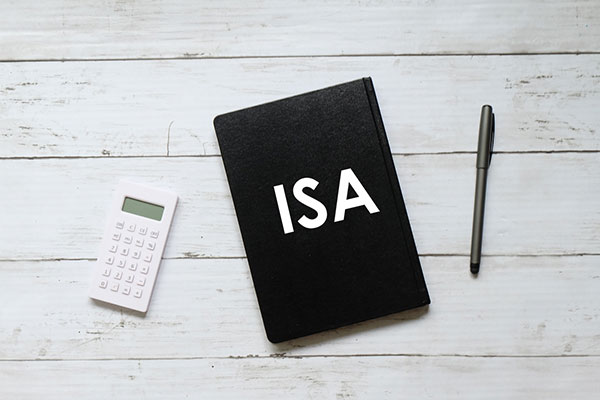Inflation blip this month? How to protect your savings and investments
In yet another unexpected twist, inflation might arrest two months of sharp declines to nudge back up again. Craig Rickman takes a closer look at what’s going on and suggests three ways to keep it at bay.
5th September 2023 11:31
by Craig Rickman from interactive investor

The government’s bid to curb sizzling inflation never promised to be easy, and the news that price rises might speed up again underscores the task at hand.
In the latest example of just how stubborn it has become, Chancellor Jeremy Hunt said that, despite falling sharply in both June and July, inflation looks to have risen again in August. We’ll know for sure later this month when the official figures are revealed, but the UK consumer prices index (CPI) is expected to creep back above 7%.
- Invest with ii: Open a Stocks & Shares ISA | ISA Investment Ideas | Transfer a Stocks & Shares ISA
If confirmed, Hunt claims it will be a blip rather than the start of a trend and remains confident the government is still on track to drive inflation below 5% by the end of the year.
The inflation juggernaut has slowed in recent months, but it’s still a long way off the Bank of England’s 2% target. Despite a sticky start to the year, including a 0.4 percentage point rise in February, inflation fell from 8.7% to 6.8% between May and July.
August’s predicted surprise upswing has been attributed to rising fuel prices, with drivers being hit hard at the pumps. According to the RAC, petrol prices rocketed 7p a litre last month, while diesel prices soared by 8p. It proved one of the largest monthly fuel price hikes since 1990.
But fuel isn’t the only factor keeping inflation high. Food inflation fell in August, but at 11.5% remains a big concern. Meanwhile, although the energy price cap recently dropped below £2,000 for the first time in 18 months, bills are still double what households were paying before Russia invaded Ukraine.
Attention now turns towards the Bank of England’s Monetary Policy Committee, which meets again on 21 September to decide what to do with interest rates; it now seems nailed on that the base rate will rise for the 15th consecutive time. While some economists believe this might be the final hike of the cycle, others – most notably Karen Ward, one of Hunt’s advisers – recently warned that central banks will take whatever measures necessary to tame inflation, even if that means plunging economies into recession.
With high inflation set to hang around for some time yet, now might be a good time to inspect your savings and investments to make sure your hard-earned money keeps its value in the years ahead. Here are three things for you to think about.
1) Cash in on higher savings rates
The amount you can earn on your savings has improved dramatically since the Bank of England began hiking interest rates, but you may have to stray from the high street to find the best deals.
In its Cash Savings Market Review 2023, published in July, the Financial Conduct Authority found that “while smaller firms offer higher easy-access rates than the largest firms (a median of 3.7% compared to 2%), 75% of consumers with a savings account hold savings with their main current account provider”.
Last week, National Savings and Investments (NS&I) shook up the savings market, raising the interest rate on its one-year Growth and Income Bonds above 6%. As my colleague Myron Jobson noted, the move “throws down the gauntlet to high street banks”, which are under pressure to follow suit or risk losing customers.
Some banks have already responded. On Monday 4 September, the Telegraph reported that Santander has launched an easy-access savings account paying 5.2% - the best deal of its kind for 14 years.
2) Don’t forget tax wrappers
If you’re looking to take advantage of higher savings account rates, such as those offered by the NS&I bonds, there is something to consider first. While the rates are indeed attractive, any interest you earn is taxable, which means HMRC could grab up to 45%.
To highlight the impact this can have on what ultimately ends up in your pocket, I’ve crunched a few numbers.
But first, it’s important to factor in the savings allowance. If you’re a 20% taxpayer, you can earn £1,000 in interest every year without paying tax, while if you pay higher-rate tax (40%), your allowance is £500. If you earn more than £125,140 and pay 45% tax, you don’t get an allowance; you pay tax on the lot.
So, let’s examine the impact of tax on a £50,000 savings account, which earns 6.20% interest, or £3,100 in money terms. I’ve applied the relevant savings allowance.
- A basic-rate taxpayer would receive £2,680 after tax - an effective return of 5.36%.
- A higher-rate taxpayer would receive £2,060 after tax – an effective return of 4.12%
- An additional-rate taxpayer would receive £1,705 after tax – an effective return of 3.41%.
What this emphasises is the importance of making sure that you’ve considered tax wrappers, such as individual savings accounts (ISAs), first – especially anyone in the higher tax brackets. This year’s ISA allowance is £20,000, which means a couple can save or invest £40,000 between now and April and protect any growth, dividends, and interest from the taxman.
The top Cash ISAs are currently paying 5.78% if you lock the money away for a year. And the upshot here is that because ISAs are tax free, you get to keep everything you earn, whatever rate of tax you pay.
If you’ve already maximised your ISA, with either the Cash or Stocks and Shares components - or a bit of both - it can be prudent to transfer any remaining savings to the spouse or partner who pays the lowest rate of tax.
- Six tips to retire using your ISA investments
- ISA fund ideas for different ages and stages
- ‘High risk? I don’t see it that way’: the investment secrets of an ISA millionaire
For instance, if one spouse is a 40% taxpayer and the other pays 20%, a couple with £50,000 in savings could shave £620 off their combined annual tax bill if the money is held in the lower taxpayer’s name.

3) Make sure you’re diversified
The uptick in interest rates has increased the allure of cash, but when saving and investing for your future it’s vital that your portfolio contains a range of assets. Stocks and shares may not offer the security of cash but they do offer the potential for better returns over longer investment time frames.
Even though the gap between interest rates and price rises has narrowed in recent months, inflation continues to outpace even the best cash rates on offer. And the news that prices might nudge back up, albeit probably (and hopefully) temporarily, means you may have to wait a bit before inflation stops eroding the real value of your savings.
When it comes to shielding your savings and investments from inflation, a well-diversified portfolio can be a sensible approach. The idea behind not “putting all your eggs in one basket” is that should some parts of your portfolio perform poorly, others will prop them up.
And diversification isn’t just about spreading your money across different asset classes such as cash, shares, bonds and property. Varying geographies should also be considered. Year-to-date, global stock market performance illustrates this point. While the FTSE 100 is marginally lower than where it started 2023, despite hitting an all-time high in February, the Nikkei 225, Japan’s main market, is having its best year in a decade. The Dow Jones, meanwhile, is 5% up on 1 January, but its trajectory has been rocky. We can expect more of this volatility and uncertainty to play out in the final four months of 2023.
The ‘higher for longer inflation’ environment means now might be a good time to make sure all corners of your portfolio are set up to lessen the impact. Shopping around for the best cash rates, using your tax wrappers, and making sure your savings and investments are well-diversified are three good places to start.
These articles are provided for information purposes only. Occasionally, an opinion about whether to buy or sell a specific investment may be provided by third parties. The content is not intended to be a personal recommendation to buy or sell any financial instrument or product, or to adopt any investment strategy as it is not provided based on an assessment of your investing knowledge and experience, your financial situation or your investment objectives. The value of your investments, and the income derived from them, may go down as well as up. You may not get back all the money that you invest. The investments referred to in this article may not be suitable for all investors, and if in doubt, an investor should seek advice from a qualified investment adviser.
Full performance can be found on the company or index summary page on the interactive investor website. Simply click on the company's or index name highlighted in the article.